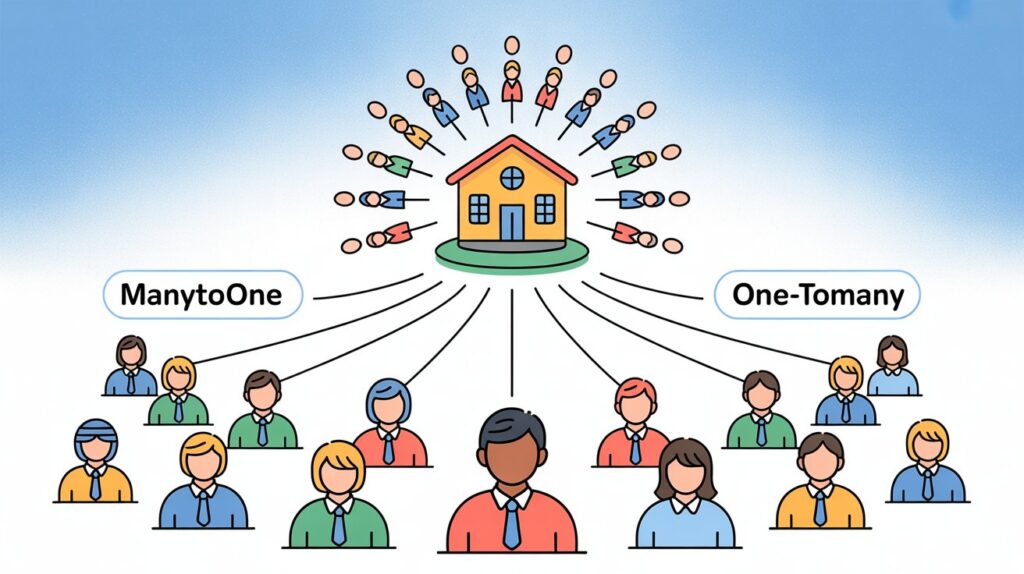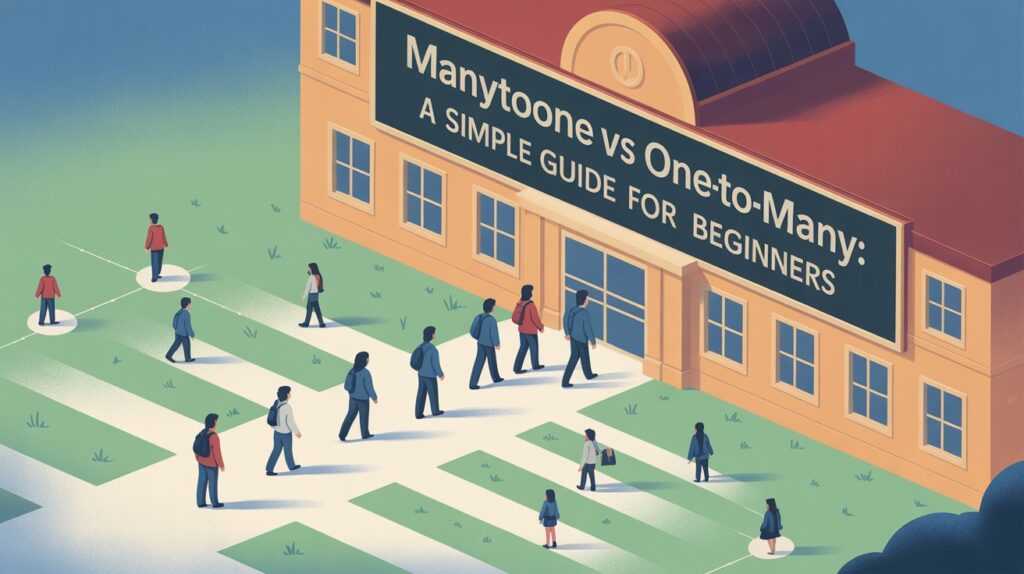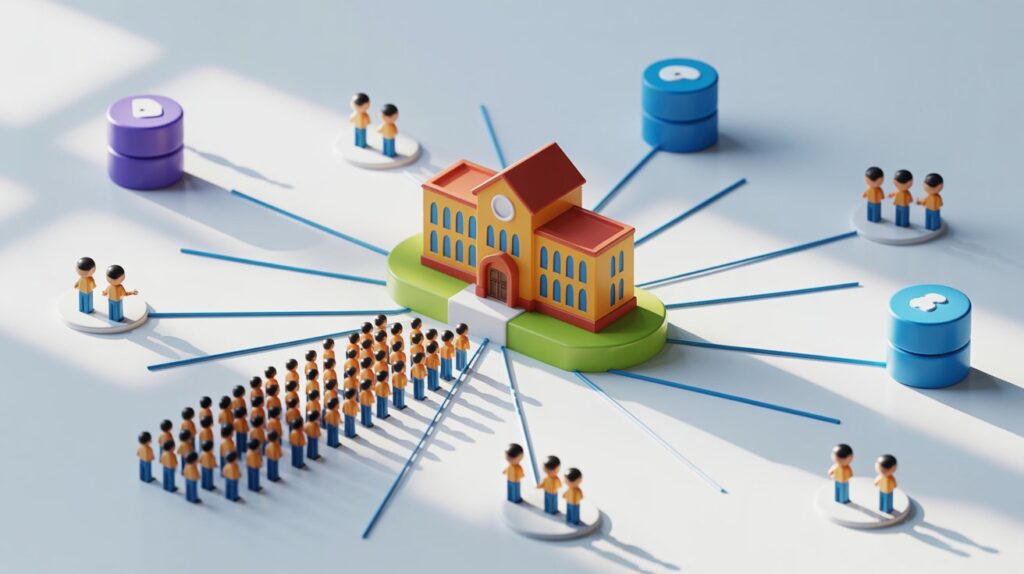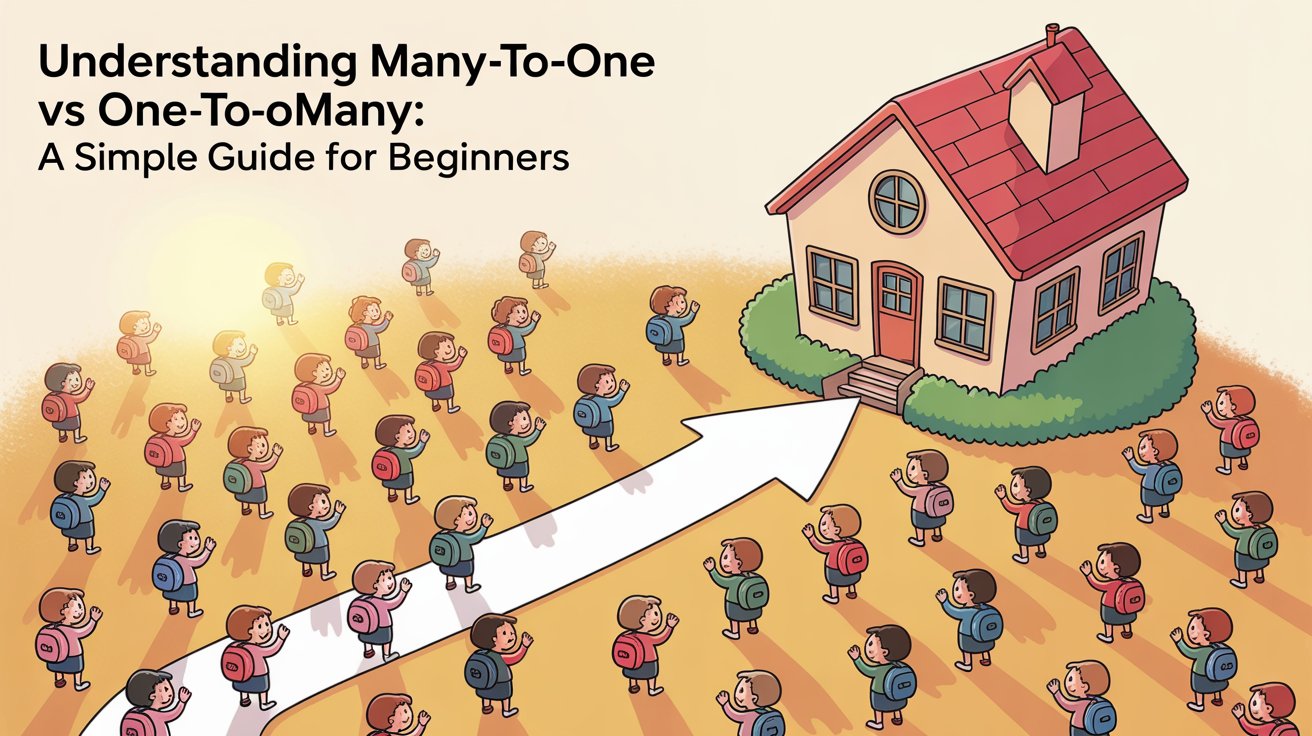ManyToOne vs OneToMany might sound like complex terms, but they are just ways to show how things connect in a database. Think of it like this: if many students go to one school, that’s a ManyToOne relationship. On the flip side, if one school has many students, that’s a OneToMany relationship. These terms help us organize data so that it’s easy to find and use later.
In the world of databases and programming, especially when using tools like JPA and Hibernate, understanding these relationships is super important. They help us map out how different pieces of data relate to each other. For example, in a school system, each student might be linked to one school (ManyToOne), and each school might have a list of students (OneToMany). Knowing when and how to use these relationships makes our data organized and our programs run smoothly.
Table of Contents
What Does ManyToOne vs OneToMany Mean?
Manytoone vs onetomany is all about how things are linked in a database. It’s like saying how people or items are connected to each other. If many kids go to one school, that is a many-to-one relationship. If one school has many kids, that is a one-to-many relationship. These two are very common when we build apps or websites with databases. They help us store and find data more easily. Think of it like boxes where you keep stuff: each box has a label so you can find things fast. Manytoone and onetomany help us create these labels. So, in simple words, they show who is connected to what and how they are connected in a neat and clear way.
Real-Life Examples: Understanding Relationships in Databases
Let’s make manytoone vs onetomany easy with examples. Imagine a teacher and students. One teacher teaches many students. That’s one-to-many. Now, if each student goes to one teacher, that’s many-to-one. Another example: A city has many people (one-to-many), and each person lives in one city (many-to-one). These examples help us understand how things connect in the real world, and we can use the same idea in databases. When building an app, maybe you want to show each customer’s orders. One customer can have many orders—that’s one-to-many. It’s like drawing lines from one thing to many or from many things to one. So, these ideas help us keep things sorted and linked the right way.
Why Choosing the Right Relationship Matters

Using the correct link between manytoone vs onetomany is super important. If you choose the wrong one, your app or website might get confused. Think of it like using the wrong key for a door. It won’t open. If you say each book has many authors (but really it has one), your data will be messy. This can cause problems when people try to find something. Picking the right relationship makes your work easier and helps others use the data correctly too. It keeps things clean and simple. Whether you are saving user data, product lists, or anything else, always check what kind of connection it should be—one to many or many to one—so your project runs smoothly.
How to Set Up ManyToOne and OneToMany in JPA/Hibernate
If you’re using JPA or Hibernate in Java, setting up manytoone vs onetomany is not too hard. First, you need to know which side owns the relationship. For a one-to-many setup, use @OneToMany on the main side, and @ManyToOne on the other. This tells your code who is linked to who. You also add @JoinColumn to show which column connects them. Always remember to use mappedBy when linking the other side. That helps your app understand both sides of the connection. It’s just like drawing lines between tables so they can talk to each other. These small steps make a big difference. Your database will be organized, and your app will run better and faster.
Common Mistakes and How to Avoid Them
When using manytoone vs onetomany, people often make small but serious mistakes. One big mistake is forgetting to use mappedBy on the one-to-many side. This can create extra database tables that you don’t need. Another mistake is not handling lazy loading, which can make your app slow or even crash. Sometimes people mix up who owns the relationship, and that causes bugs. To avoid this, always check your annotations and test your code. Use simple examples first before building big things. Keep your code clean and clear, and ask questions when you’re not sure. By avoiding these common problems, you will save a lot of time and make better, smarter apps and websites.
Tips for Beginners: Making Sense of Database Relationships

If you’re new to databases, learning about manytoone vs onetomany can feel confusing at first. But don’t worry—it gets easier! A good tip is to draw it out. Use simple boxes and arrows to show which item connects to what. Practice with real-life things like books and authors or schools and students. Try writing sample code using JPA or Hibernate, and play around with small projects. Use print statements to see what your code is doing. Read simple guides or watch short videos that explain relationships in a fun way. Most of all, take your time and don’t rush. Keep testing and learning bit by bit. Soon you’ll understand it, and you’ll be building strong database setups like a pro!
Visualizing Relationships: Diagrams and Charts
Seeing manytoone vs onetomany with pictures makes it way easier to understand. Draw a box for each item, like “Student” and “School,” and use arrows to show the relationship. One arrow from many students to one school means many-to-one. Many arrows from a school to students means one-to-many. Tools like ER diagrams or simple flowcharts can help. There are also online tools that let you make database diagrams fast. These pictures help your brain see the links without just reading words. It’s great for learning and also useful when you explain your project to someone else. So next time, don’t just write code—draw it too. It’s fun and very helpful for remembering everything clearly.
Advanced Insights: When to Use Each Relationship Type
Understanding when to use manytoone vs onetomany depends on how your data works. Use one-to-many when one thing is the boss of many things, like a company with many workers. Use many-to-one when each worker belongs to just one company. Sometimes you need both sides in one app. That’s okay! Just be sure you pick the one that makes sense for the situation. Advanced users also think about how much memory the app uses or how fast it runs. They might even choose different ways to link data for better speed. So, always plan first. Think about your data like a story, and choose the relationship that helps tell it the best way.
Keep your code simple. And always test it. These relationships might sound tricky, but with time, they become one of the easiest parts of working with databases.
Conclusion: Mastering Database Relationships for Better Data Management

Understanding manytoone vs onetomany is like learning how to connect things the right way. Just like how one teacher teaches many students, or many students go to one school, these ideas help us sort and store data properly. When you use the right type of connection, your app or website works better and faster. It also becomes easier to fix problems and add new things.
So, don’t be scared of these big words. Start with small examples and practice often. Try drawing pictures, writing simple code, and reading clear guides. The more you play with these relationships, the more you will understand. Keep learning and have fun with databases—they are like puzzles waiting to be solved!
FAQs
Q: What is the difference between manytoone and onetomany?
A: Manytoone means many items connect to one thing. Onetomany means one thing connects to many items.
Q: Do I need to use both relationships in my project?
A: Not always. Use the one that matches your data. You can use both if needed, but only when it makes sense.
Q: Is it hard to use manytoone and onetomany in code?
A: No, it’s easy if you learn step by step. Use simple examples and test your code often to understand better.

